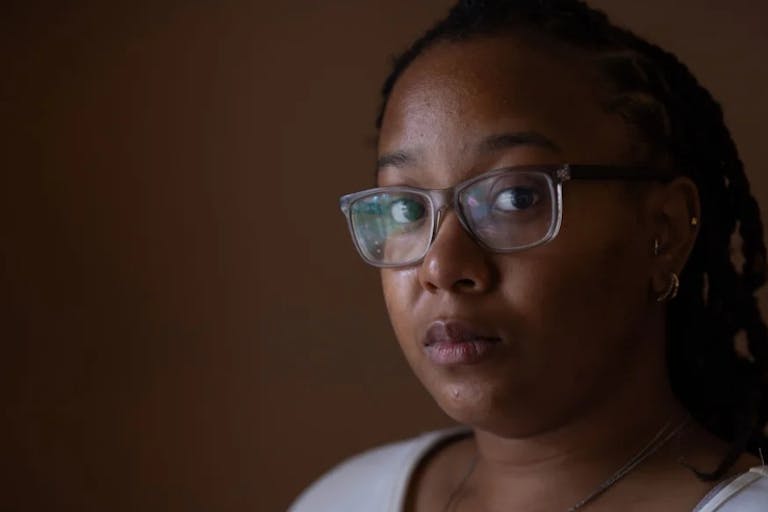
FACT CHECK: Are pro-life laws to blame for arrest of SC woman who delivered baby in a toilet?
Nancy Flanders
·
Abortionist discusses spending just 10 minutes with virtual clients before prescribing abortion pill
Michele Gomez, an abortionist and self-proclaimed “activist physician,” has talked to Ms. Magazine about her career and described how she prescribes abortion pills via telemedicine conferences that can be as short as 10 minutes.
Gomez said her abortion facility began offering the abortion pill shortly after it was approved by the FDA, and began offering telemedicine abortions when the pandemic started:
During the pandemic, a lot of us were horrified when some states deemed abortion a ‘non-essential’ service when we knew it was a time of great uncertainty and there might be even more people who would feel unsure about continuing a pregnancy.
As clinicians who have known and cared for patients for many years, we could actually feel the fear and confusion and wanted to do what we could to help. I’m incredibly fortunate to live in California, where reproductive rights are protected, so I helped our office start providing telemedicine abortions to make it easier and more accessible to patients.”
Inspired by Plan C and Aid Access, Gomez set up her own system for dispensing the abortion pill through telemedicine, following the “no test” protocol frequently promoted by Dr. Daniel Grossman. This means a woman seeking to take the abortion pill at home will not receive a blood test or an ultrasound first, making it impossible to determine her true gestational age, if she has an extrauterine pregnancy, or has any contraindications for the abortion pill. Gomez, however, argued that giving women the abortion pill without doing any testing whatsoever is a positive thing.
“It was really heartening to see so many people in the world of abortion care, each with their own expertise, working together to help each other expand access wherever and however they could,” she said. “It was a sanity-saving contrast to so many other terrible things that were happening at the time.”
READ: Poll: Most Americans want significant abortion restrictions, oppose abortion pills by mail
To commit a telemedicine abortion, Gomez said she has patients fill out a questionnaire before their video conference, and told Ms. Magazine that the video chats can often be quick. “I think the last patient I saw was under 10 minutes to go over everything, answer their questions and let them know I’d be available,” she said. “I’ve also had some video visits that are 20-30 minutes long because the patient either really wanted to talk about their feelings or things that were going on or had a lot of questions.”
This is concerning for numerous reasons. First, there is no way a 10-minute online chat, without a blood test or ultrasound, can rule out any of the numerous things that can make the abortion pill a higher risk. One of those risks is ectopic pregnancy, which is life-threatening for women, and even without this potential complication the abortion pill has already been found to be four times more dangerous than first-trimester surgical abortions. Without an ultrasound, Gomez can’t do proper gestational dating, so if the woman ends up being wrong about how far along she is, it can have dire consequences. The abortion pill is not meant to be taken past 10 weeks of pregnancy; doing so led to the deaths of two women in the United Kingdom, and a 28-week preborn child also died last year when a woman took the abortion pill without supervision. Numerous other women, per a leaked NHS e-mail, had serious complications.
Second, this kind of situation is rife with the potential for abuse. With a mere video conference, and a short one at that, there is no possible way for Gomez to properly assess if the woman is seeking the abortion pill of her own volition. Coerced abortions are not rare, despite what the abortion industry may claim, and abusers often use abortion as a tool to cover up their crimes. Even abortionists have admitted that abortion does not help solve the issue of domestic violence, and a 10-minute telemedicine conference will do nothing to protect a potential victim from an angry abuser lurking off-screen, threatening her if she doesn’t go through with the abortion.
Furthermore, Gomez said she doesn’t perform any follow-up care afterward, assuming that “most people understand what’s supposed to happen, know their bodies, and know how to get help if they need it.”
“I’m happy to be there for them and they can easily reach me if needed,” she said.
Yet many women have no idea what can happen when they undergo a chemical abortion. Women have spoken of how unprepared they were for the pain and trauma of the abortion pill process, including copious amounts of bleeding, and have described it in words like “horrific,” “terrifying,” “humiliating,” and like “the scene of a murder.” Yet Gomez assumes women should know how painful a chemical abortion should or should not be, and whether they need to get medical attention later.
The lack of in-person medical help during a chemical abortion not only kills a child — it puts women at even greater risk.
“Like” Live Action News on Facebook for more pro-life news and commentary!
Live Action News is pro-life news and commentary from a pro-life perspective.
Contact editor@liveaction.org for questions, corrections, or if you are seeking permission to reprint any Live Action News content.
Guest Articles: To submit a guest article to Live Action News, email editor@liveaction.org with an attached Word document of 800-1000 words. Please also attach any photos relevant to your submission if applicable. If your submission is accepted for publication, you will be notified within three weeks. Guest articles are not compensated (see our Open License Agreement). Thank you for your interest in Live Action News!

Nancy Flanders
·
Analysis
Cassy Cooke
·
Politics
Cassy Cooke
·
Analysis
Cassy Cooke
·
Analysis
Nancy Flanders
·
Newsbreak
Angeline Tan
·
International
Cassy Cooke
·
Analysis
Cassy Cooke
·
Politics
Cassy Cooke
·
Analysis
Cassy Cooke
·
Activism
Cassy Cooke
·